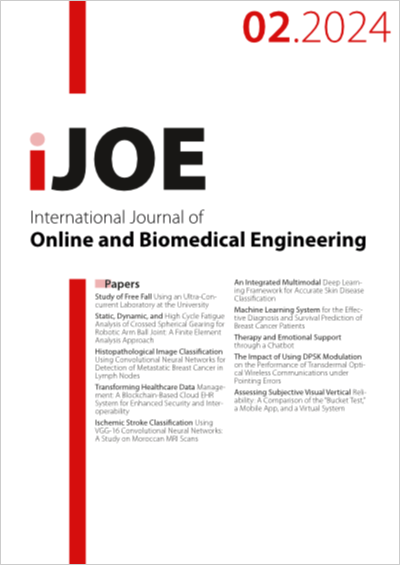The Impact of Using DPSK Modulation on the Performance of Transdermal Optical Wireless Communications under Pointing Errors
DOI:
https://doi.org/10.3991/ijoe.v20i02.44627Keywords:
Transdermal, DPSK, Average SNR, OP, OR, Average Ergodic Capacity, Optics, TOW, Optical wireless CommunicationAbstract
The current paper explores the impact of misalignment between transceivers (referred to as pointing error (PE)) on the performance of transdermal optical wireless (TOW) technology, as indicated by average signal-to-noise ratio (SNR), outage probability (OP), outage rate (OR), and average ergodic capacity (AEC). This study was inspired by the effectiveness of differential phase shift keying (DPSK) in enhancing the reliability of the link in free-space optical communications (FSO). Furthermore, this enhancement was studied and analyzed in consideration of the impact of pointing errors. In particular, this paper presents a mathematical analysis that considers certain characteristics of the channel, limitations within the body, the pointing errors (PEs) between the transceivers, and other specific aspects of the optical unit. The results demonstrate the significant impact of PEs on the reliability of the TOW link and highlight the improvement provided by the DPSK technique. i.e., 3 dB better performance compared to the on-off keying (OOK) modulation technique. Finally, this research demonstrates the practical application of wireless optical technology in the medical field within the wavelength range of 800–1300 nm, with optimal performance observed around 1100 nm.
Downloads
Published
How to Cite
Issue
Section
License
Copyright (c) 2023 Yazeed Rbeihat, Prof. Omar Hasan

This work is licensed under a Creative Commons Attribution 4.0 International License.



